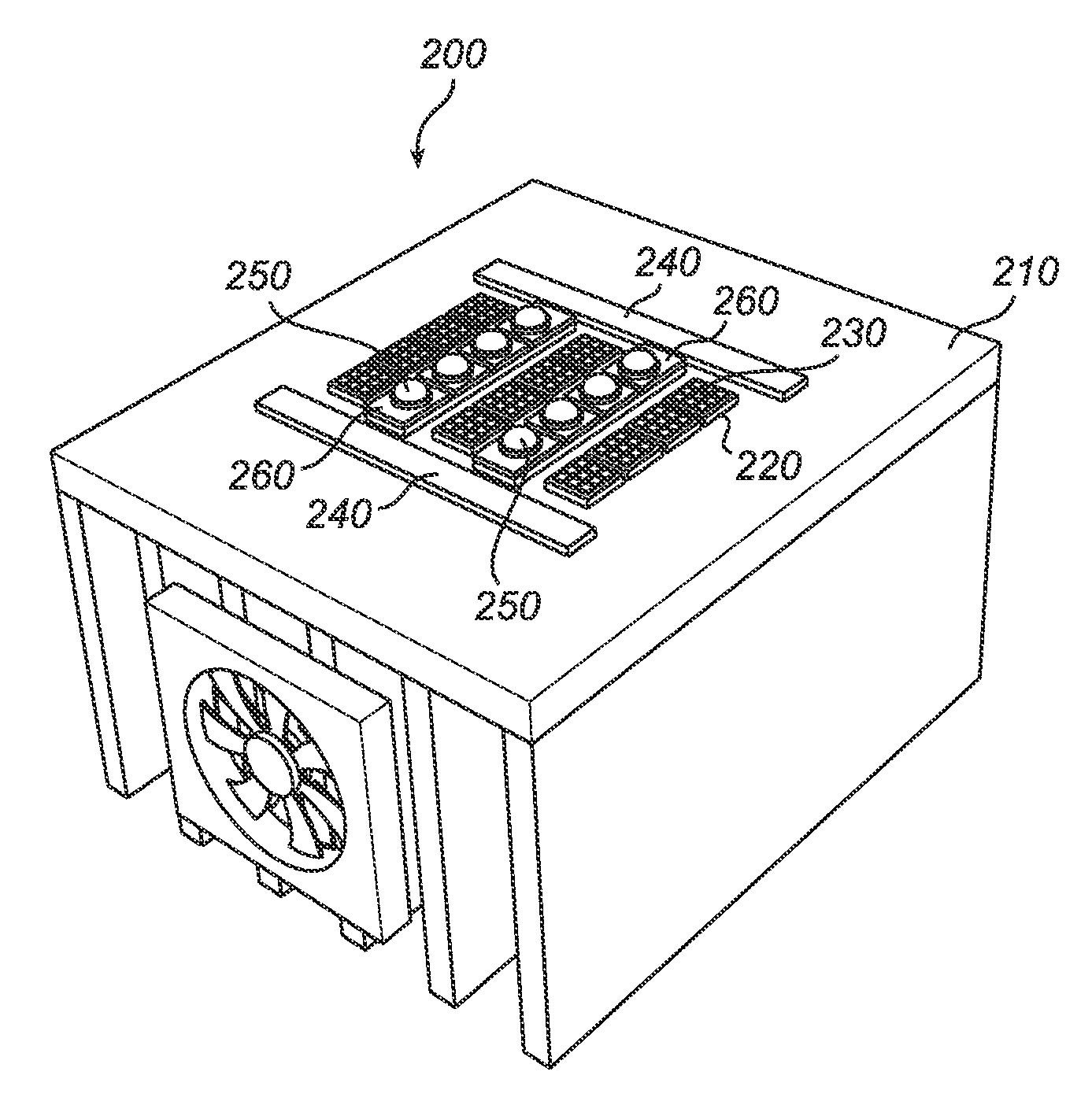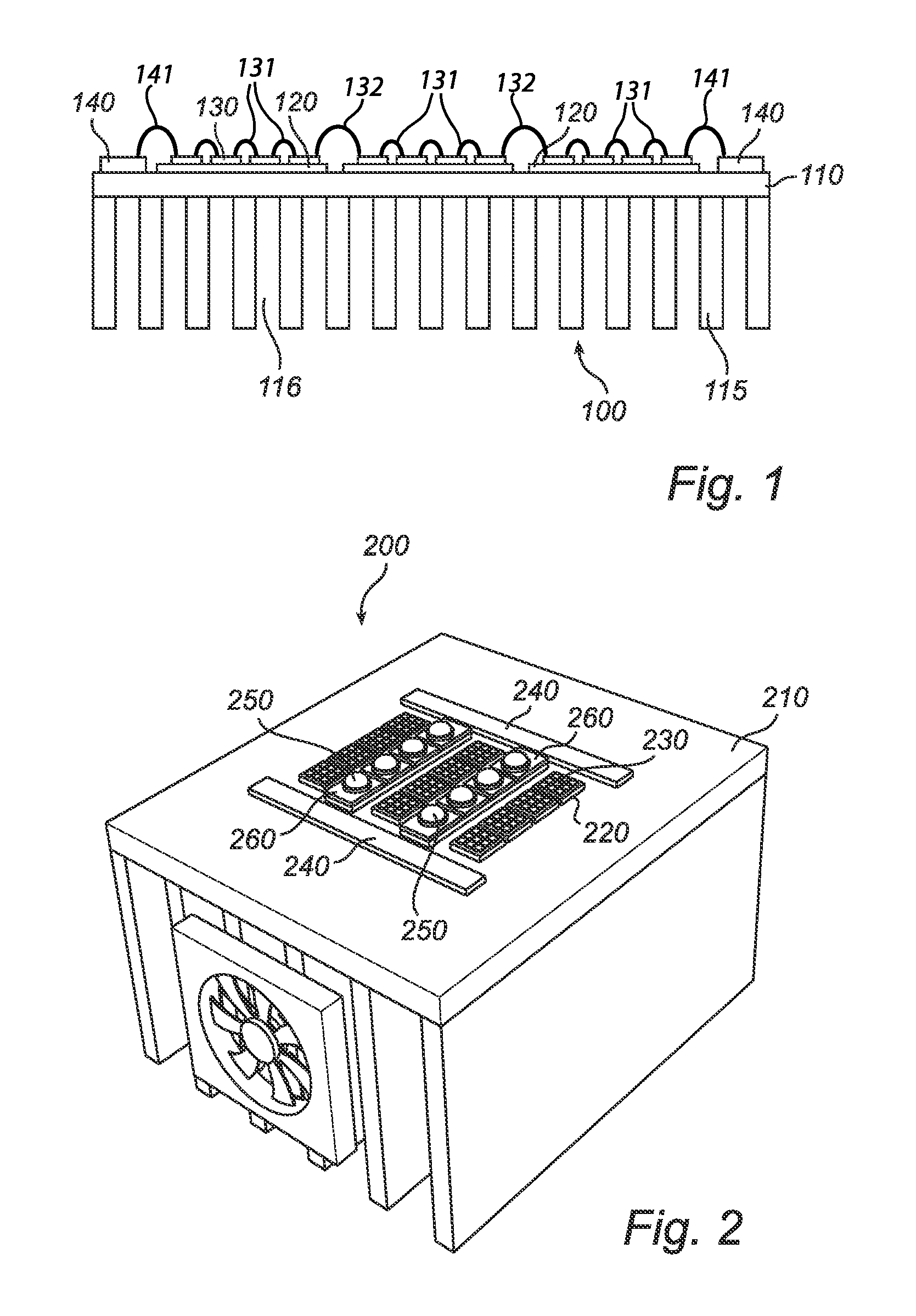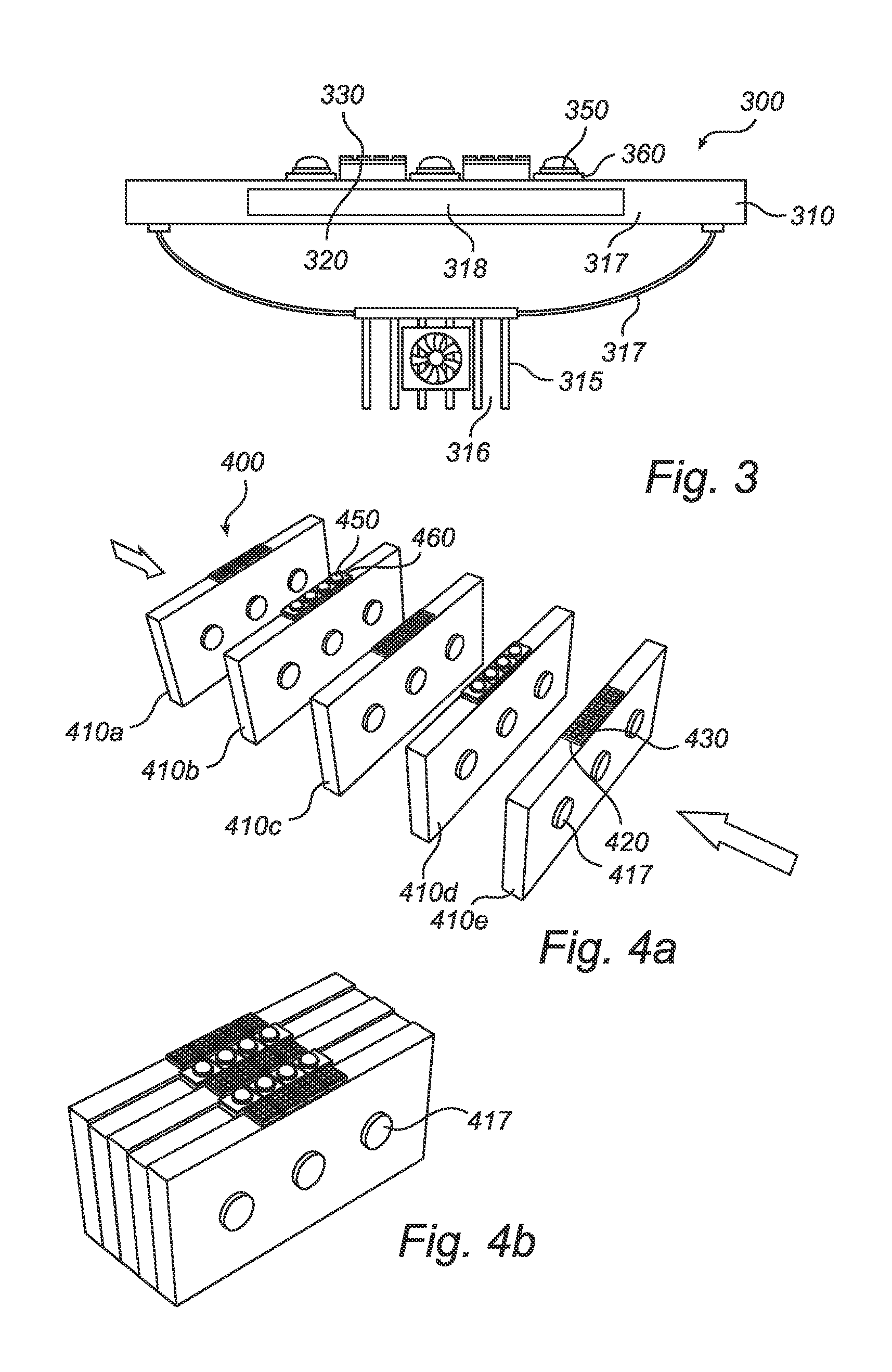LED light structure
- Summary
- Abstract
- Description
- Claims
- Application Information
AI Technical Summary
Benefits of technology
Problems solved by technology
Method used
Image
Examples
Embodiment Construction
[0031]FIG. 1 is a schematic side view of an embodiment of the inventive light structure. The light structure 100 comprises a heat sink 110. The heat sink 110 is arranged to cool the light structure 100 by dissipating heat into the surrounding air. This is accomplished through increasing the surface area in contact with the cooling fluid surrounding it, such as the air. The heat sink 110 can, e.g., be a heat exchanger such as those used in refrigeration and air conditioning systems or a radiator such as those used in cars. In one embodiment, the heat sink has cooling fins 115, as is disclosed in FIG. 1. The cooling fins 115 comprise cooling air 116. The heat sink 110 can, e.g., be made of copper.
[0032]The light structure 100 further comprises a plurality of ceramic tiles 120. The ceramic tiles 120 can, e.g., be made of AlN (aluminum nitride). AlN has about the same thermal expansion coefficient as the LEDs. The inventors have found through testing that the thermal expansion mismatch ...
PUM
 Login to View More
Login to View More Abstract
Description
Claims
Application Information
 Login to View More
Login to View More - R&D
- Intellectual Property
- Life Sciences
- Materials
- Tech Scout
- Unparalleled Data Quality
- Higher Quality Content
- 60% Fewer Hallucinations
Browse by: Latest US Patents, China's latest patents, Technical Efficacy Thesaurus, Application Domain, Technology Topic, Popular Technical Reports.
© 2025 PatSnap. All rights reserved.Legal|Privacy policy|Modern Slavery Act Transparency Statement|Sitemap|About US| Contact US: help@patsnap.com



